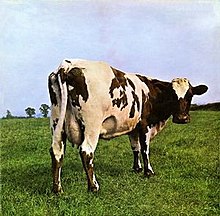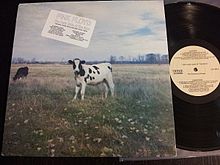
The Dark Side of the Moon is the eighth studio album by the English rock band Pink Floyd, released on 1 March 1973 by Harvest Records in the UK and Capitol Records in the US. Developed during live performances before recording began, it was conceived as a concept album that would focus on the pressures faced by the band during their arduous lifestyle, and also deal with the mental health problems of the former band member Syd Barrett, who departed the group in 1968. New material was recorded in two sessions in 1972 and 1973 at EMI Studios in London.

Animals is the tenth studio album by English rock band Pink Floyd, released on 21 January 1977 through Harvest Records and Columbia Records. It was self-produced at Pink Floyd's Britannia Row Studios in London throughout 1976. The album continued the long-form compositions that made up their previous works such as Meddle (1971), and Wish You Were Here (1975).
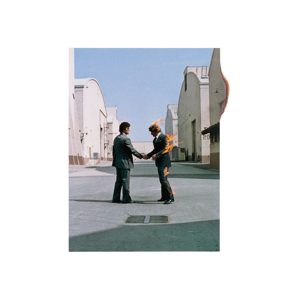
Wish You Were Here is the ninth studio album by English rock band Pink Floyd, released on 12 September 1975 through Harvest Records in the UK and Columbia Records in the US, their first for the label. Based on material Pink Floyd composed while performing in Europe, Wish You Were Here was recorded over numerous sessions throughout 1975 at EMI Studios in London.

Meddle is the sixth studio album by the English rock band Pink Floyd, released by Capitol on 30 October 1971 in the US and by Harvest Records on 5 November in the UK. The album was produced between the band's touring commitments, from January to August 1971 at a series of locations around London, including EMI Studios and Morgan Studios.

A Momentary Lapse of Reason is the thirteenth studio album by the English progressive rock band Pink Floyd, released in the UK on 7 September 1987 by EMI and the following day in the US on Columbia. It was recorded primarily on guitarist David Gilmour's converted houseboat, Astoria.

A Saucerful of Secrets is the second studio album by English rock band Pink Floyd, released on 28 June 1968 by EMI Columbia in the UK and on 27 July 1968 in the US by Tower Records. The mental health of singer and guitarist Syd Barrett deteriorated during recording, so guitarist David Gilmour was recruited; Barrett left the band before the album's completion.

Ummagumma is the fourth album by English rock band Pink Floyd. It is a double album and was released on 7 November 1969 by Harvest Records. The first disc consists of live recordings from concerts at Mothers Club in Birmingham and the College of Commerce in Manchester that contained part of their normal set list of the time, while the second contains solo compositions by each member of the band recorded at EMI Studios. The artwork was designed by regular Pink Floyd collaborators Hipgnosis and features a number of pictures of the band combined to give a Droste effect. It was the last album cover to feature the band.

The Final Cut is the twelfth studio album by the English rock band Pink Floyd, released on 21 March 1983 through Harvest and Columbia Records. It comprises unused material from the band's previous studio album, The Wall (1979), alongside new material recorded throughout 1982.

Echoes: The Best of Pink Floyd is the fourth compilation album by the English rock band Pink Floyd, released on 5 November 2001 by EMI internationally and a day later by Capitol Records in the United States. It debuted at No. 2 on the Billboard 200 album chart on 24 November 2001, with sales of 214,650 copies. It remained on the chart for 26 weeks. The album was certified gold, platinum and double platinum on 6 December 2001 in the US by the RIAA. It was certified triple platinum in the US on 8 January 2002, and quadruple platinum on 10 September 2007.

Relics is a 1971 compilation album by English progressive rock band Pink Floyd. The album was released in the UK on 14 May 1971 and in the United States on the following day. Initially released by Starline, the compilation was reissued by Music for Pleasure in the United Kingdom, while Harvest and Capitol distributed the album in the United States. A remastered CD was released in 1996 with a different album cover, picturing a three-dimensional model based on the sketch drawn by drummer Nick Mason for the album's initial release.
"Echoes" is a song by the English rock band Pink Floyd, and the sixth and last track on their 1971 album Meddle. It is 23+1⁄2 minutes long and takes up the entire second side of the original LP. The track evolved from a variety of different musical themes and ideas, including instrumental passages and studio effects, resulting in the side-long piece. The music was written by the group, while Roger Waters' lyrics addressed themes of human communication and empathy, which he returned to in later work.
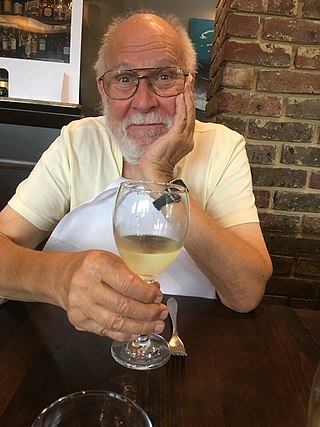
Ronald Frederick Geesin is a Scottish musician, composer and writer known for his unusual creations and novel applications of sound, as well as for his collaborations with Pink Floyd and Roger Waters.

Music from The Body is the soundtrack album to Roy Battersby's 1970 documentary film The Body, about human biology, narrated by Vanessa Redgrave and Frank Finlay.
"Atom Heart Mother" is a six-part suite by the progressive rock band Pink Floyd, composed by all members of the band and Ron Geesin. It appeared on the Atom Heart Mother album in 1970, taking up the first side of the original vinyl record. At 23:44, it is Pink Floyd's longest uncut studio piece. Pink Floyd performed it live between 1970 and 1972, occasionally with a brass section and choir in 1970–71.

In their live performances, from the mid-60s until their very last concerts several decades later, Pink Floyd was known to utilize immersive live visuals. Pink Floyd set standards in sound quality with innovative use of sound effects and panning quadrophonic speaker systems.
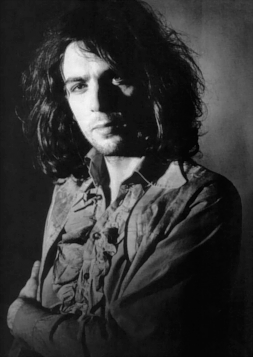
Roger Keith "Syd" Barrett was an English singer, guitarist and songwriter who co-founded the rock band Pink Floyd in 1965. Barrett was the band's frontman and primary songwriter, known for his whimsical style of psychedelia, English-accented singing, and stream-of-consciousness writing style. As a guitarist, he was influential for his free-form playing and for employing effects such as dissonance, distortion, echo and feedback.
"If" is a song by English rock band Pink Floyd on their 1970 album Atom Heart Mother. This song was one of several to be considered for the band's "best of" album, Echoes: The Best of Pink Floyd.

Pink Floyd are an English rock band formed in London in 1965. Gaining an early following as one of the first British psychedelic groups, they were distinguished by their extended compositions, sonic experiments, philosophical lyrics and elaborate live shows. They became a leading band of the progressive rock genre, cited by some as the greatest progressive rock band of all time.
"Embryo" is a song by Pink Floyd. It was regularly performed live in 1970–71, but never released on any regular Pink Floyd studio album.

Richard William Wright was an English musician who co-founded the progressive rock band Pink Floyd. He played keyboards and sang, appearing on almost every Pink Floyd album and performing on all their tours. He was inducted into the Rock and Roll Hall of Fame in 1996 as a member of Pink Floyd.
